Best Cordless 7-1/4 Circular Saw
7-1/4″ Circular Saw Head to Head | 2022
Legend has it that a Shaker Woman in Harvard Massachusetts named Tabitha Babbitt saw two men struggling with a pit saw and decided to come up with a better option, inspired by her spinning wheel. She made a smaller prototype and eventually the design was enlarged for use in sawmills to cut logs into dimensional lumber in sawmills around the end of the 18th-century.
In 1922 Raymond Dewalt invented the first radial arm saw an important step in bringing a smaller more readily usable saw into woodworking and carpentry shops.
Then in 1929 Art Emmons created the first portable handheld circular saw. Nearly 100 years later the circular saw is the most widely used saw, with use in industrial, commercial, residential, and DIY projects. In this head-to-head, we will crown one saw as the Best Cordless 7-1/4 Circular Saw.
In 2014, we conducted our first head-to-head comparison of the best cordless 18v circular saws and did it again in 2016. The Tool Box Buzz crew set out to run our second head-to-head on cordless circular saws in 2016, to see who had the best in the industry at that time. Here are those comparisons: 2014 H2H and our 2016 H2H.
7-1/4″ Cordless Circular Saw | Testing Format
For this Best Cordless 7-1/4″ Circular Saw evaluation, our team evaluated a total of 7 essential categories as detailed below. Each of the categories was ranked individually and a selection was used to declare the “Overall Best Cordless 7-1/4″ Circular Saw” based on the combined test results.
- Accuracy / Line of Sight– The accuracy and line of sight of the saws was compared including the ability to follow a cut line
- Performance [Power / Speed Test]-We looked at cutting speed through 2 stacked 3/4″ plywood sheets as an indicator of saw motor performance.
- Features– An overall comparison of features and specifications.
- Weight – We rank the tools’ weight as bare tools.
- Noise – We used a decibel meter used to measure the tool under no load and under identical cutting load conditions.
- Price– Price is always an important factor in determining which saw is best for a user. We’ve included the current pricing found online for each of the saws “as-tested,” at the time of publication. Because we tested DIY and Pro grade tools we did not include the price ranking in our overall scoring.
- Best Value – Often times this category winner tends to resonate with most folks, as it identifies the saw tends to perform well in the tests, but feels good on the wallet.
Cordless 7-1/4″ Circular Saw Specifications
We examined a total of ten saws from eight different manufacturers for this Head-2-Head. The following is a list of all the 7-1/4″ Circular Saws that the ToolBoxBuzz crew examined in this Head-2-Head:
DEWALT – Model: DCS574B
- Volts: 20V
- No Load Speed: 5,500 RPMS
- Max Cut Depth at 90°: 2-9/16″
- Max Cut Depth at 45°: 2″
- Bevel Capacity: 57°
- Weight: 10.15 LBS
- Bare Tool Price: $179.00
- Mfg Link: Dewalt DCS574B
DEWALT – Model DCS578B Flexvolt
- Volts: 60V
- No Load Speed: 5,800 RPMS
- Max Cut Depth at 90°: 2-9/16″
- Max Cut Depth at 45°: 2″
- Bevel Capacity: 57°
- Weight: 10.2 LBS
- Bare Tool Price: $189.99
- Mfg Link: Dewalt DCS578B
Hilti – Model: SC30WR-22
- Volts: 22V
- No Load Speed: 4,700 RPMS
- Max Cut Depth at 90°: 2-5/8″
- Max Cut Depth at 45°: 2″
- Bevel Capacity: 50°
- Weight: 8.30 lbs
- Bare Tool Price: $279.00
- Mfg Link: Hilti SC30WR-22
Makita – Model: GSH02Z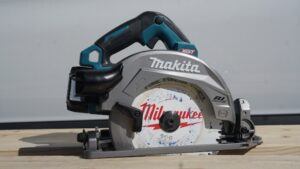
- Volts: 40V
- No Load Speed: 6,000 RPMS
- Max Cut Depth at 90°: 2-3/8″
- Max Cut Depth at 45°: 1-11/16″
- Bevel Capacity: 56°
- Weight: 10.4 LBS
- Bare Tool Price: $339.00
- Mfg Link: Makita GSH02Z
Makita – Model: XSH07ZU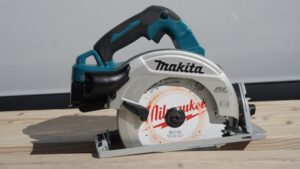
- Volts: 36V (x2 18v)
- No Load Speed: 6,000 RPMS
- Max Cut Depth at 90°: 2-5/8″
- Max Cut Depth at 45°: 1-13/16″
- Bevel Capacity: 56°
- Weight: 10.5 LBS
- Bare Tool Price: $289.00
- Mfg Link: Makita GSH07ZU
Metabo HPT – Model: C3607DAQ4
- Volts: 36V
- No Load Speed: 4,300 RPMS
- Max Cut Depth at 90°: 2-7/16″
- Max Cut Depth at 45°: 1-7/8″
- Bevel Capacity: 55°
- Weight: 9.7 LBS
- Bare Tool Price: $119.71
- Mfg Link: Metabo HPT C3607DAQ4
Milwaukee – Model: 2732-20
- Volts: 18V
- Load Speed: 5,800 RPMS
- Max Cut Depth at 90°: 2-1/2″
- Max Cut Depth at 45°: 1-7/8″
- Bevel Capacity: 50°
- Weight: 9.05 LBS
- Bare Tool Price: $219.00
- Mfg Link: Milwaukee 2732-20
Ridgid – Model: R8657B
- Volts: 18V
- No Load Speed: 5,400 RPMS
- Max Cut Depth at 90°: 2-9/16″
- Max Cut Depth at 45°: 1-7/8″
- Bevel Capacity: 56°
- Weight: 8.3LBS
- Bare Tool Price: $179.00
- Mfg Link: Ridgid R8657B
Ryobi – Model: PBLCS300B
- Volts: 18V
- No Load Speed: 4,300 RPMS
- Max Cut Depth at 90°: 2-7/16″
- Max Cut Depth at 45°: 1-3/4″
- Bevel Capacity: 56°
- Weight: 6.5 LBS
- Bare Tool Price: $99.00
- Mfg Link: Ryobi PBLCS300B
Kobalt – Model: KXCS 124B-03
- Volts: 24V
- No Load Speed: 5,500 RPMS
- Max Cut Depth at 90°: 2-1/2″
- Max Cut Depth at 45°: 1-3/4″
- Bevel Capacity: 56°
- Weight: 9.4 LBS
- Bare Tool Price: $149.00
- Mfg Link: Kobalt KXCS 124B
| Mfgr | Model | Weight (lb) | Rank |
| Ryobi | PBLCS300KI | 7.15 | 1 |
| Metabo HPT | C3607DAQ4 | 7.5 | 2 |
| Makita | XSH07PTU | 8.3 | 3 |
| Hilti | SC30WR-22 | 8.3 | 4 |
| Dewalt | DCS574 | 8.4 | 5 |
| Dewalt | DCS578X1 | 8.4 | 5 |
| Makita | GSH02M1 | 8.6 | 6 |
| Ridgid | R8657B | 8.8 | 7 |
| Milwaukee | 2732 | 9.4 | 8 |
| Kobalt | KXCS 124B-03 | 9.6 | 9 |
Milwaukee Saw Blades – Model 48-40
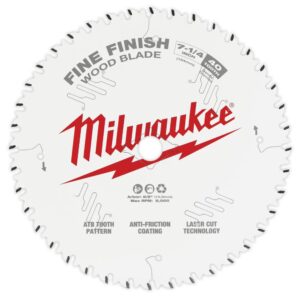
Prior to testing, all of the circular saws were supplied with task-specific, saw blades, we used:
- 40-teeth, 7’1/4″ Fine Finish blade, model 48-40-0726. $16.97
- 24-tooth 7-1/4″ Framing blade, 48-40-0720. $ 10.97
By using the Milwaukee saw blades, we kept the focus on the tools rather than the blades.
Controlling for blade variability allows our assessments to focus on the motor, battery, and electronics to gauge the performance of the saws. Also, to get all the saws close when it comes to batteries, we decided to compare all the saws with a 4.0 Ah to 6.0 Ah battery range.
The use of uniform blades throughout the testing helped to ensure consistency by removing an external testing variable.
We chose the Milwaukee blades for their better precision, cooler cuts, and longevity. We geek out on their Cobalt Infused Tungsten Carbide, laser Cut Vibration Slots to reduce wobble, and Anti-Friction Coating that prevents gumming. Plus the Milwaukee blades are a favorite because they’re priced right and reliable.
Accuracy Testing / Line of Sight – Winner Makita Saws, and Metabo HPT
For our accuracy test, we had an experienced PRO user cut plywood using a straight edge guide with each saw, then rank the equipment depending on how well it performed. The saws were also verified for accuracy at their 90° and 45° factory bevel settings with testing equipment.
| Mfgr | Model | Accuracy | Rank |
| Makita | GSH02M1 | 1 | 1 |
| Makita | XSH07PTU | 1 | 1 |
| Metabo HPT | C3607DAQ4 | 1 | 1 |
| Dewalt | DCS574 | 2 | 2 |
| Dewalt | DCS578X1 | 2 | 2 |
| Hilti | SC30WR-22 | 3 | 3 |
| Milwaukee | 2732 | 4 | 4 |
| Kobalt | KXCS 124B-03 | 4 | 4 |
| Ridgid | R8657B | 5 | 5 |
| Ryobi | PBLCS300KI | 5 | 5 |
This test was performed by a single operator to keep the test standardization under control. We also checked the scales and slots on the saw’s baseplate for accuracy. Ideally, these kerf slots line up with the cut on the motor side of the blade. This way the reference point is consistent and the only variable will be the offset between the plate of the blade and the teeth. When the saw plate scales are accurate, users can line up cuts for quick, accurate cuts, which can save a lot of time!
For the accuracy category each of the circular saws was ranked on accuracy in the following areas:
- Line of Sight
- Scale/slot accuracy
- Bevel accuracy when set to 45 degrees.
- Cross-cut accuracy with bevel set to 0 degrees (how perpendicular the cut is to the face of the work piece)
Performance Testing (Power/Speed)
The speed at which a circular saw can cut through a particular material is a factor of the blade shape (width, diameter, tooth count, and tooth shape), blade rotational speed, and horizontal force applied. As a saw blade moves through the material, the saw motor will encounter a resistance that will require more torque and power to keep the blade spinning at its optimal speed. As a blade edge dulls or too much horizontal force is applied, the saw blade rotational speed will begin to slow down. A skilled user can usually tell when a saw is working too hard and knows to back off on how much force they are applying during a cut. A more powerful saw will be able to counteract these resistances better and ultimately be able to remove more material and cut faster.
To test the power and ultimately the speed of these saws the TBB crew needed to control as many of the cutting variables as we could. We achieved this by using a standard blade across all the saws, using consistent high-quality plywood as our material, and controlling the horizontal force applied to the saw with a drop weight pulley system and a low friction rig.
Each saw was affixed to a Kreg Accu-cut sled for ultimate compatibility across all the manufacturers. The Accu-cut track system was secured to our testing rig and an 8-foot section of a double layer of ¾” plywood was indexed underneath, resulting in an 8-foot rip of 1 ½” material. A line was attached to the Accu-cut sled and fed through a series of low friction pullies and attached to an 8 lb weight. This weight was raised to the ceiling in our shop and provided a consistent 8lb horizontal force to pull the saw through the cut.
Each saw was given three cuts through the material and the time of all the cuts was averaged and compared. Electro-mechanical micro-switches were secured to the start and stop sections of the cutting rig. The time automatically started as the saw began its cut and again automatically stopped as the sled reached the far end and the cut was finished. This removed any bit of human error associated with a handheld stopwatch.
After each cut, the track system was cleaned of all sawdust and debris. Before the first run of each saw the sled was lubricated with silicone spray and inspected to ensure a smooth low friction cut.
The more powerful saws were able to keep the rotational speed of the blade up, therefore, removing material more quickly and ultimately traveling faster across the rig and completing the cut in less time. This setup allowed us to stress the saws in a non-abusive manner and provided enough of a performance spread that allowed us to rank them individually and determine which saw was the most powerful.
KREG Accu-Cut Aluminum Circular Saw Track
The KREG track system allows a user to make straight, accurate, splinter-free cuts with your circular saw, without having to spend a huge expense for a separate track saw.
The Accu-cut guides your circular saw along an aluminum track that keeps the saw moving in a straight line easily. The Accu-cut design makes it simple to set up by just aligning the track with your cut line. The track features an anti-slip coating to prevent slipping and an anti-chip feature to prevent splintered cuts. Plus, the track makes it easy to make straight cuts on sheets that don’t have a straight, flat edge. We found the Accu-cut track easy and intuitive to use, but robust enough for professionals.
What impressed me the most with the Kreg Accu-cut guides was how easily it allowed us to mount 18 different saws securely to it. That, and the fact that Kerg uses Phillips set screws to secure the track sections, – that’s pure genious ~ ROB
Performance Testing (Power/Speed) – Winner DEWALT DCS578B
The FlexVolt saw crushed its competition on the performance sled with an average score of 18-seconds. Even without the electronic timer, the team noted this saw’s speed ripping through double-layered 3/4″ AC plywood.
When I pushed the FlexVolt saw hard I was able to rip a 69-inch LVL in 6.5 seconds with no bogging down – impressive! ~ ROB
Second place in the performance testing went to the Milwaukee M18 saw with an average score of 21.8 seconds. This saw eats double layered plywood for breakfast but when pushed hard through LVL we stalled it 4 times.
Milwaukee has always been conservative in its Red Lithium batteries and onboard electronics, like many manufacturers, they build in protections in the tool from overheating and draining the battery. We feel that the settings on this saw might be set too low.
Third place went to the new Ridgid saw with an average time of 22.1 seconds. This newly designed brushless saw performed well in this test. The team loved the power in our subjective LVL testing, plywood, and framing lumber cutting.
Ridgid tools are the hidden Gem of the tool industry – More pros need to try these tools out! ~ SCOTT
| Mfgr | Model | Run1 | Run2 | Run3 | Run Ave | Rank |
| Dewalt | DCS578X1 | 17.6 | 19.5 | 18 | 18.4 | 1 |
| Milwaukee | 2732 | 22.95 | 20.5 | 22 | 21.8 | 2 |
| Ridgid | R8657B | 23.71 | 21.04 | 21.78 | 22.2 | 3 |
| Hilti | SC30WR-22 | 23.5 | 22.07 | 22.8 | 22.8 | 4 |
| Makita | GSH02M1 | 24.5 | 22.5 | 22.06 | 23.0 | 5 |
| Metabo HPT | C3607DAQ4 | 26.14 | 25.88 | 23.36 | 25.1 | 6 |
| Makita | XSH07PTU | 27 | 25.41 | 26.4 | 26.3 | 7 |
| Dewalt | DCS574 | 27.35 | 27.25 | 24.46 | 26.4 | 8 |
| Ryobi | PBLCS300KI | 65 | DNF | DNF | 65 | 9 |
| Kobalt | KXCS 124B-03 | DNS | DNS | DNS | N/A | 10 |
Best Cordless 7-1/4-inch Circular Saw Features – Winner Hilti
Circular saws are the workhorse of many job sites. They are synonymous with portable, fast and accurate field cuts. The flexibility and precision of this tool make it invaluable for the job site PRO.
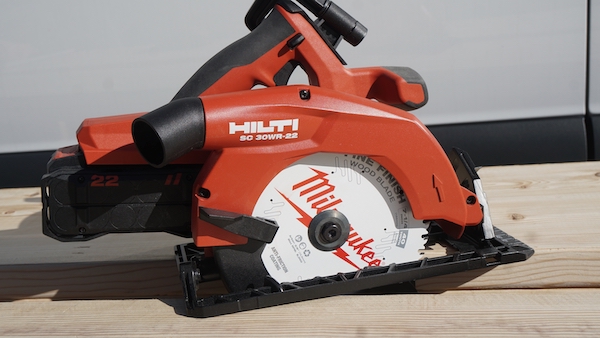
It’s never easy to compare tool features from different brands, but the devil is in the details, thus a feature comparison is necessary.
The entire team used all of the tools in a variety of cutting configurations and tests [stringers, plywood, LVL KD lumber] to rate six separate features on these saws on a scale of one to five. [With 1 being the best]
Features that we looked at:
- Blade Change | Spindle Lock
- Bevel
- Blade Depth
- Trigger | Grip
- Electric Brake
- Site line / Cut Scale
A new blade for your application is critical to ensure a quality cut and productivity on the job site. Changing a blade should be easy, safe, and convenient. We evaluated the blade change on the ten saws and although there were no clear standouts, there were a few distinctions that are worthy of note.
Best Blade Change – DEWALT
Nothing exciting came out of the blade change assessment. The key discriminator was the onboard storage of the wrench, and how quickly, and easily the arbor locked for blade changing.
All of the saws had onboard Allen keys with exception of the DEWALT, which uses an onboard angled wrench. During this evaluation, we noted three saws worthy of reporting to you.
- Makita 36 v saw has a stiff arbor lock spring that we found difficult to actuate.
- Bosch 18v tolerances on the blade guard are super tight making the blade change awkward
- The two DEWALT saws had the most arbor lock detents [28] compared to the Milwaukee at 4- detents. The rest of the saws were between 4 to 12 detents.
Best Bevel – Tie: Hilti, Kobalt, Makita
As a remodeling carpenter, if I’m setting a circular saw bevel to 22.5, 45, or greater degrees, the scale is probably good enough for me. If I need a dead-on bevel, I’ll use a miter, table saw, or track-saw. That said, I’d like to operate a saw that has an accurate bevel scale, that I don’t have to work hard to set. A circular saw is a rough cutting saw where speed is everything. A bevel scale that allows users to quickly set and verify common bevel settings is the key performance indicator for this category.
The best beveling saws were the Hilti, Makita 36v and Kobalt. They all have knobs that control the positive stops at max bevel 45 and 22.5 degrees. The Hilti and Makita 36v had the best action selectors that were easy to use, set, and understand.
Most of the saws bevel past 45- degrees. The DEWALT saw bevels at 57-degrees. Hilti saw bevels at 50-degrees, the Kobalt at 55-degrees, and the Makita 36 volt bevels at 56- degrees.
The Hilti positive stops were “money,” the action really kills it. It has a super solid build, with a stop knob on the bevel, and easy to see bevel and depth scales. ~ ETHAN
The Kobalt has a similar scale to the Milwaukee, a laser-etched scale screwed onto the tool, a large comfortable lever, and a surprisingly nice action, and detailing.
The Makita 40V and Metabo HPT have positive stops at 45- degrees with the lever option to go to max bevel [48 and 55 degrees].
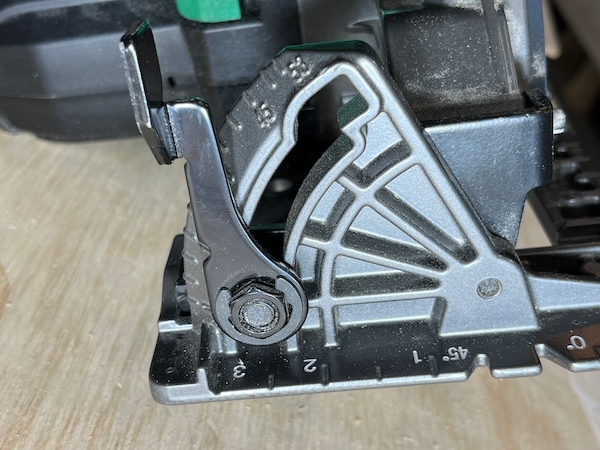
The team really liked the Milwaukee scale but would like to see a stop at 45- degrees added.
For such a powerful and smooth cutting saw, with outstanding line of sight and scales, I don’t understand why this bevel does not have positive detents. I should not have to “hunt” for 45-degrees, Milwaukee should address this! ~ ROB
The Ryobi followed the pack with a simple, very basic, plastic scale, no one was impressed, and the bevel line-of-sight was underwhelming.
Best Blade Depth Adjustment – Tie: Hilti, Makita 40v
While the team feels that setting the depth of a circular saw is best done by setting the blade projection just past the depth of the material being cut, there is something to be said about a gauge that can quickly and accurately set the depth of the saw.
Precision in tooling and gauges simply carries through in overall tool quality and performance. The Hilti really stood out as a smooth adjusting tool. Its a solid Build! ~ SCOTT
The Hilti and Makita 40-volt had the smoothest blades’ depth action and adjustment, with legible, accurate high contrast scales. In contrast, we found the Metabo HPT bevel action stiff and does not offer a depth scale. We did note that the Metabo HPT does have a cast base plate with a machined edge on the blade side – which is a nice fit and finish detail.
Best Trigger | Grip – Hilti and Makita 36v and 40v
For a circular saw to have a good grip there must be sufficient friction between the user’s hand and the handle. This is more important when the user’s hand is sweaty. All of the saws had a non-slip, non-conductive, and compressible material for a grip.
When looking at the tool triggers we considered frequent movements of the index finger while operating the circular saw. We can all agree, that this movement should be comfortable. For example; a longer trigger allows the use of two or three fingers to activate and could reduce discomfort, contrast that to pinch points between the trigger and housing which can be uncomfortable or cause hot spots.
The Hilti and both Makita saws have a comfortable grip, a smooth rounded trigger with excellent action, and no pinch points.
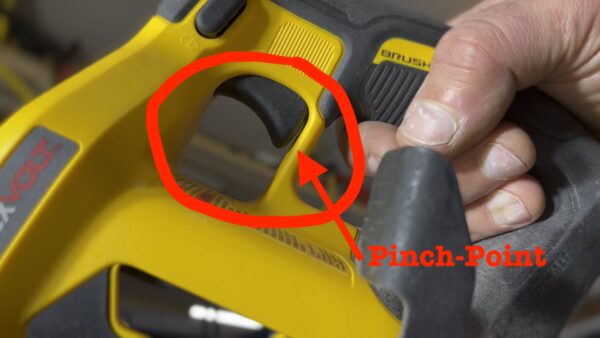
The DEWALT has a trigger guard and the trigger has a pinch point at the bottom of the trigger and tool housing. While many smaller hand users will pull the trigger higher, larger hand users will find this a pinch point situation.
The Milwaukee and Ryobi triggers require the most pull force, coupled with sharp edges resulting in trigger hotspots.
Best Site Lines – Winners DEWALT 20v Max DCS574W1 AND DEWALT FlexVolt DCS578B
The clipped guard on the DEWALT saws provided the best line of sight to where the blade meets wood.
Every saw has notches or marks on the front of the shoe to indicate where the blade is going to cut, but not all of them are intuitive, or easy to follow. So when it matters, looking for where the blade meets the wood, is the best way to verify that your cut is going to be where you want it.
Runtime, ergonomics, and power are all well and good but if you can’t see what you’re doing your accuracy and productivity will suffer. Not only that, but having to fold yourself in half to get that sight line to the blade will leave you with a very sore back at the end of the day!
Other Stand Out Features
There were a few stand-out features that affect performance, safety, and user experience.
Rafter Hooks
Most of the saws had 2×4 rafter hooks with the exception of Metabo HPT and Ryobi which did not have hooks. The two Makitas saws have a location to add on an optional hook, at an additional cost.
I can’t believe that Makita builds such an amazing saw and makes you buy the rafter hook as an accessory – come on Makita ~ WES
The Hilti rafter hook mounts on the top of the saw and can get in the way of a user actuating the safety switch. As a right-handed user, I would orient the hook far left and vis-versa for a left-handed user. No one on the team liked or appreciated the placement of the hook while using the saw.
Wow, for such a nicely built saw, they fell asleep at the wheel on the rafter hook ~ ETHAN
Dust Ports
The Hilti has a really nice integrated, swivel dust port with a wide chute orifice. Both Makita saws, Ridgid, and Milwaukee have dust ports.
One interesting observation on the Makita, and Rigid dust ports, if you look inside them, they have massive choke points where the dust point turns 90-degrees. This results in a much-reduced flow.
Blue Tooth Vacuum Activation
Both the Makita saws have the AWS system (Auto-Start Wireless System) which is Bluetooth technology that enables wireless power-on/power-off with an AWS-equipped dust extractor. Makita AWS-equipped tools have a small wireless transmitter inserted into a handle on the tool. The transmitter can communicate with a Makita dust extractor also equipped with an AWS transmitter.
The AWS-equipped tool can also communicate with ANY corded dust extractor with an onboard AC outlet and the optional Makita AWS Universal Adaptor. The adapter has an AWS wireless transmitter and plugs into the dust extractor’s onboard AC outlet. The transmitter and adapter are optional and do cost more money but the convenience, long-term time savings, and efficiency make it an investment worth considering.
Silent Mode
Metabo HPT silent mode is an auto-sensing mode that reduces the blade RPM to 2,000 and then adjusts the RPM back up to the maximum 4,300 RPMs based on demand. There is a mode selector switch located below the trigger. This decreased blade speed produces less audible noise and is more pleasing to the ear. When the load on the tool grows, when Silent mode is selected, the motor switches from “Power” mode and then back to “Silent,” mode once the load drops.
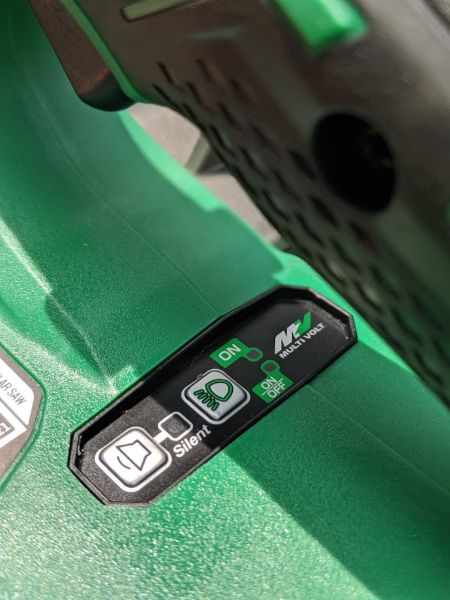
Noise – Winner Metabo HPT
OSHA allows 8 hours of exposure for up to 90 dB, for exposures 95dB and greater, the exposure limits drop dramatically. Circular saws are LOUD, and hearing protection should be used at all times.
To test these saws in a consistent manner, we used a noise meter and measured the saw’s dB level under a no-load condition at a fixed distance roughly the spacing a user would have their ears. Decibel measurements are relative to any environment and the important takeaway is that the saws were measured against each other in a consistent manner. We tested these saws in a no-load capacity, under load the saws are louder and the cutting material will dictate the noise level.
The quietest running saw was the Metabo HPT C3607DA. The saw implements a soft start feature that reduces the spikes in activation noise and continued to produce less noise during a steady state. This saw was the quietest even with its novel “Silent Mode: feature switched off.
| Mfgr | Model | Noise | Rank |
| Metabo HPT | C3607DAQ4 | 95.8 | 1 |
| Ridgid | R8657B | 96.5 | 2 |
| Ryobi | PBLCS300KI | 97.1 | 3 |
| Dewalt | DCS578X1 | 97.5 | 4 |
| Dewalt | DCS574 | 97.7 | 5 |
| Makita | GSH02M1 | 97.8 | 6 |
| Kobalt | KXCS 124B-03 | 98.2 | 7 |
| Makita | XSH07PTU | 99.7 | 8 |
| Hilti | SC30WR-22 | 101.5 | 9 |
| Milwaukee | 2732 | 103.3 | 10 |
Price – Winner Ryobi
The cost of a tool can sometimes drive a purchase. We can all agree that cost is a critical consideration when purchasing tools, especially for those of you just starting out in the trades. We also recognize that most contractors are brand loyal and will most likely stick to their existing battery platform rather than branching out and developing a new line of cordless tools.
The bulk of these saws may be found at your local big box stores, and almost all of them can be found online like ACME Tools. At the time of this test, we had an advanced sample of the Hilti Nuron. It’s a brand new saw, and not readily available yet.
Below we’ve included the current pricing (at the time of publishing this article). Pricing is based on bare tools.
The best-priced is the Ryobi PBLCS300B, costing $99.00. This saw is only available at Home Depot. Ryobi positions itself as an affordable “pro-featured” tool brand and is attractively priced for DIYers, serious enthusiasts, and some pro users. Coming in just $20 more is the Metabo HPT, followed by the Kobalt at $50 more.
| Mfgr | Model | Bare Tool Price | Rank |
| Ryobi | PBLCS300KI | $99 | 1 |
| Metabo HPT | C3607DAQ4 | $120 | 2 |
| Kobalt | KXCS 124B-03 | $149 | 3 |
| Dewalt | DCS574 | $179 | 4 |
| Ridgid | R8657B | $179 | 4 |
| Dewalt | DCS578X1 | $190 | 5 |
| Milwaukee | 2732 | $249 | 6 |
| Makita | XSH07PTU | $289 | 7 |
| Makita | GSH02M1 | $339 | 8 |
| Hilti | SC30WR-22 | UNKNOWN |
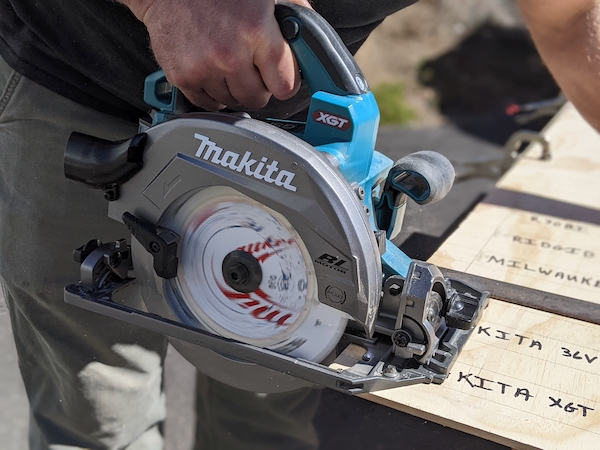
Highest Cost Saw
The Makita 40v XGT was the most expensive saw at the time of writing this article (model GSH02Z). The price of this saw is $339.00. It can be found on the websites of big box stores as well as ACME Tools, with a delivery period of roughly a week. This saw performed well in our testing and has an outstanding design fit and finish and some very nice features; such as a track-compatible base plate and excellent ergonomics, which contribute to its premium price.
Best Value Circular Saw | 2022 – Winner Metabo HPT
The best value category is a favorite for us, mostly because it crowns an outstanding performer at a reasonable cost. This category is where we directly compare price to performance. If you’re heavily invested in a tool platform or drink the green, yellow, blue, or red cool-aid you may not value this category, but it certainly caters to first-time or budget-conscious consumers, as well as, entry-level tradespeople.
| Mfgr | Model | Performance | Weight | Accuracy | Features | Totals | Rank |
| Dewalt | DCS578X1 | 1 | 5 | 2 | 2 | 10 | 1 |
| Hilti | SC30WR-22 | 4 | 4 | 3 | 1 | 12 | 2 |
| Makita | GSH02M1 | 5 | 6 | 1 | 2 | 14 | 3 |
| Makita | XSH07PTU | 7 | 3 | 1 | 3 | 14 | 3 |
| Metabo HPT | C3607DAQ4 | 6 | 2 | 1 | 6 | 15 | 5 |
| Dewalt | DCS574 | 8 | 5 | 2 | 2 | 17 | 6 |
| Ridgid | R8657B | 3 | 7 | 5 | 4 | 19 | 7 |
| Milwaukee | 2732 | 2 | 8 | 4 | 7 | 21 | 8 |
| Ryobi | PBLCS300KI | 9 | 1 | 5 | 7 | 22 | 9 |
| Kobalt | KXCS 124B-03 | 10 | 9 | 4 | 5 | 28 | 10 |
The Metabo HPT saw scored middle of the pack in our evaluation with a perfect accuracy score and lower weight, which many on the team commented on. The Metabo HPT came in 2nd for the lowest price, selling as a bare tool at approximately $120. It also has some nice features, and was the quietest saw, even without using the Silent Mode.
Best 7-1/4″ Circular Saw 2022 – Winner DEWALT DCS578B
Choosing the best 7-1/4″ circular saw wasn’t simple, but we’re convinced we went through every point in our evaluation. A product that is recognized best in class is one that outperforms competitors in the same category or segment. In comparison to their rivals, these items have the highest level of quality and/or utility.
Best 7-1/4″ Circular Saw Scoring Chart
| Mfgr | Model | Performance | Weight | Accuracy | Features | Totals | Rank |
| Dewalt | DCS578X1 | 1 | 5 | 2 | 2 | 10 | 1 |
| Hilti | SC30WR-22 | 4 | 4 | 3 | 1 | 12 | 2 |
| Makita | GSH02M1 | 5 | 6 | 1 | 2 | 14 | 3 |
| Makita | XSH07PTU | 7 | 3 | 1 | 3 | 14 | 3 |
| Metabo HPT | C3607DAQ4 | 6 | 2 | 1 | 6 | 15 | 5 |
| Dewalt | DCS574 | 8 | 5 | 2 | 2 | 17 | 6 |
| Ridgid | R8657B | 3 | 7 | 5 | 4 | 19 | 7 |
| Milwaukee | 2732 | 2 | 8 | 4 | 7 | 21 | 8 |
| Ryobi | PBLCS300KI | 9 | 1 | 5 | 7 | 22 | 9 |
| Kobalt | KXCS 124B-03 | 10 | 9 | 4 | 5 | 28 | 10 |
The best 7-1/4″ circular saw winner was the DEWALT DCS578B. With exception of the weight category, this saw excelled in every test and assessment we put to it. It is a fast-cutting, well-built, powerful saw with accurate settings and nice features.
The DEWALT is my favorite saw tested; its got power, not too heavy, is easy to adjust and is comfortable in my hand. ~ JEREMY
The new Hilti Nuron saw came in second crushing the evaluation of the features, and performing top 3-4 in the other categories. While not available yet this saw is slated for a $279 MSRP. Everyone on the team was excited about Hilti’s new innovation and performance.
The new Hilti engineering and fit and finish is well-done! I liked the bevel stop knob, legible and accurate scales, the 45-degree stop is nice too! Next stop for Hilit – a track-compatible saw. ~ ETHAN
As a company, Hilti has been slow to update its tools as evidenced by some of our past Head-to-Head tests. The Hilti saw was really well-balanced given its long length, super-solid build, was powerful, had smooth cutting, and had nice adjustments. Welcome back Hilti!
Third place went to BOTH Makita saws. The Makita saws were an easy team favorite during testing with comments such as; smooth, decent power, felt great in the hands,
The Makita 36V saw is awesome. My first saw [31 years ago] was a Makita and this saw brings me right back. Its a smooth cutting saw with great features ~ ROB
The team really likes that the Makita 40V saw which offers track compatibility, it was seriously accurate in our testing, with outstanding features. When comparing the Makita 40v to the Makita 36V saw, the team felt that with exception of the 40v being more powerful, and the track option, no one felt that alone was enough difference to switch from the 18v [36v] platform to 40 volts.
Circular Saw Test Conclusion
In each of our Head-2-Head tests, we strive to provide you with the most detailed facts available. In order to give you the most comprehensive data possible, our ALL-Pro contractor team committed a substantial amount of time and effort to our Best 7-1/4″ Circular Saw Head-to-Head analysis.
These tests and evaluations are difficult and time-consuming, and ultimately we are limited in scope because we are not a professional testing organization with unlimited time to evaluate the tools. Our crew simply does not have the time to test these saws for extended periods and evaluate their durability, and we can’t possibly test every application for which they might be utilized.
So how did we get to our final rankings? After carefully studying all our data, we rank the saws accordingly. Some of these rankings may not be relevant to you. Perhaps you are only looking at power statistics or simply looking for cost, the best thing is, all our data is right there for you to pick and choose what you need.
You get to pick what information you want or do not want! We also understand that many tradespeople have invested a significant amount of money into a battery platform and staying with that brand is a huge consideration. Our goal was to provide you with the information needed to make your own choices.
Thank you for following along with this Head-2-Head article and if you have a moment, please check out our other Head-to-Head Tests.
Buy Now From Our Sponsored Retailers
Best 7-1/4″ Circular Saw for 2022 | Video Review
About the author
21 Comments
Leave a comment
Disclosure
Product reviews on this site contain our opinion of a product or service. We will always strive for objectivity and transparency in our reviews. Our goal is to provide readers with honest, objective information based on our own experiences. We never have and never will accept payment in exchange for a positive review. Many of the products that we review are provided to us for free by a manufacturer or retailer. In some cases, we also have advertising or affiliate relationships with manufacturers and retailers of products and services we review. For additional information please visit our additional disclosure policies.












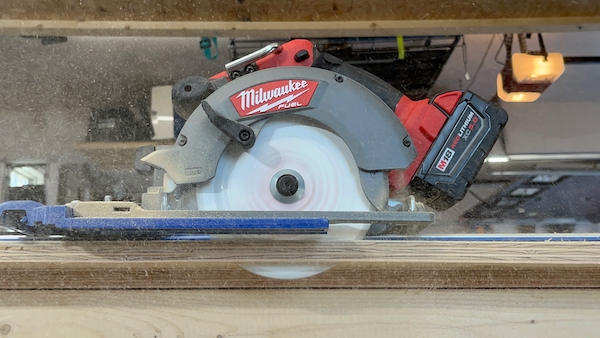

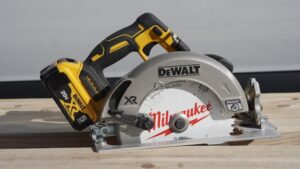
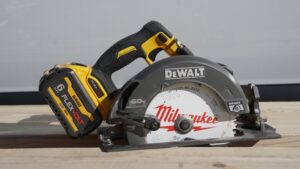
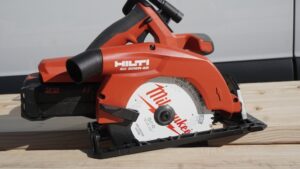
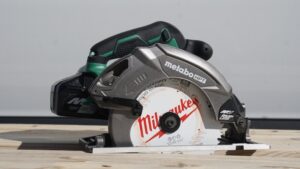
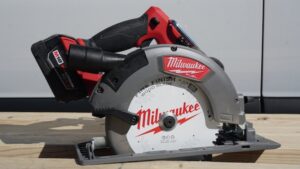
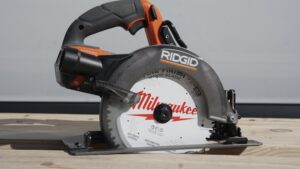
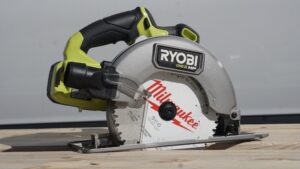
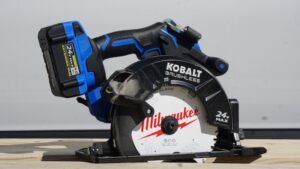
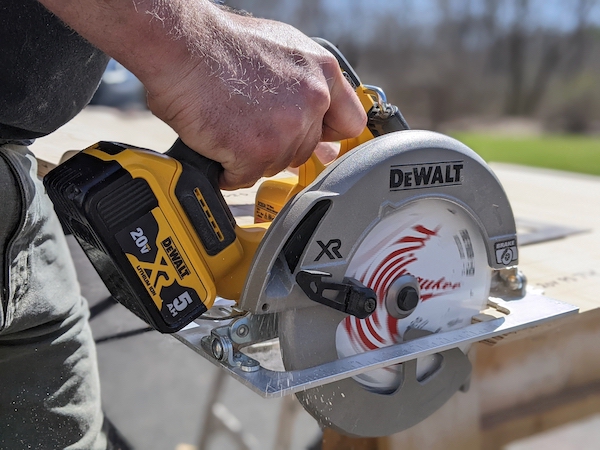
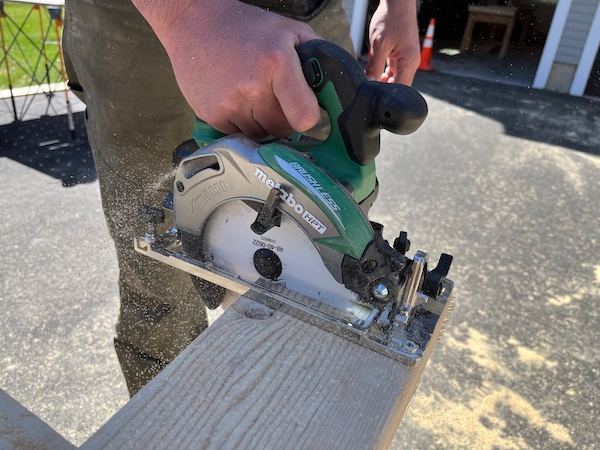
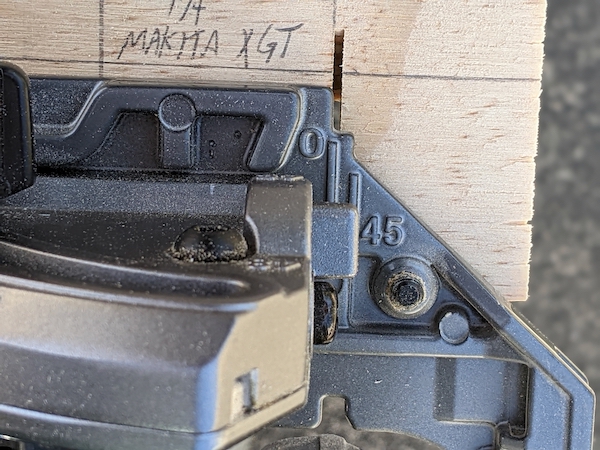
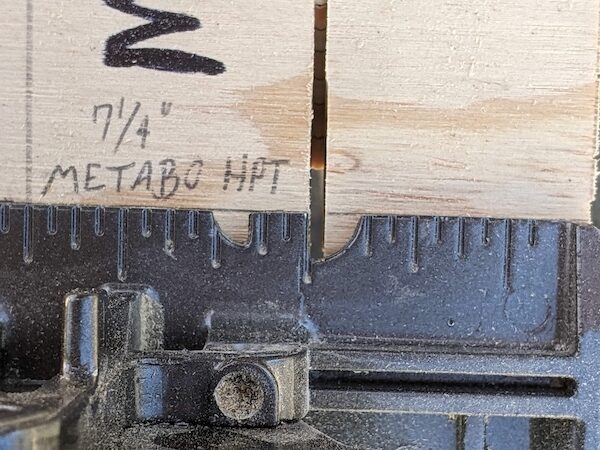
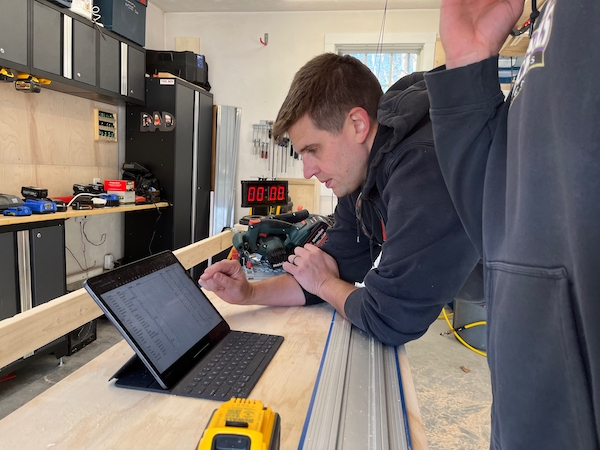
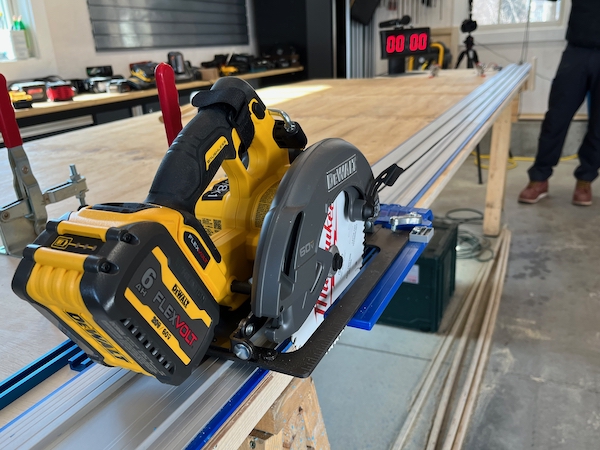
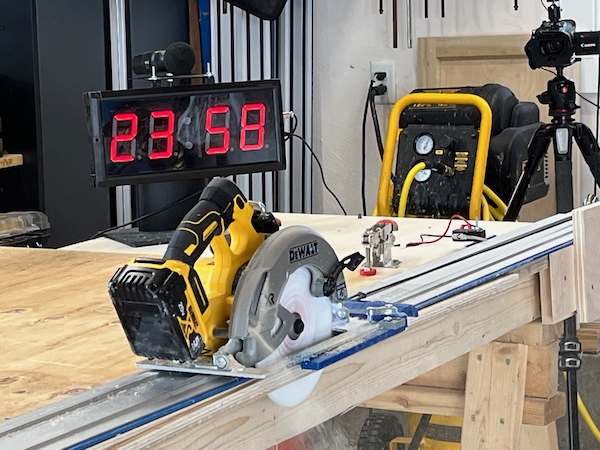
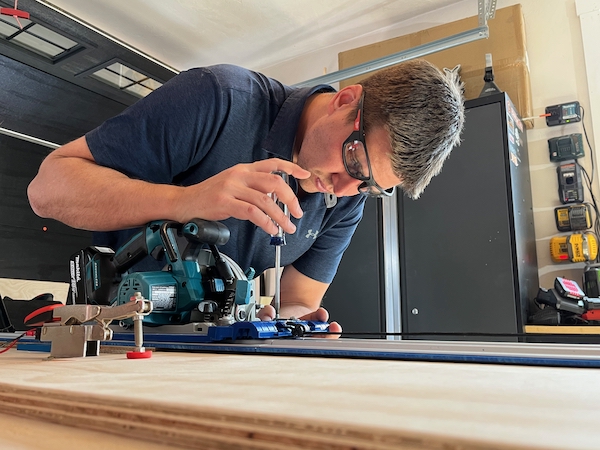
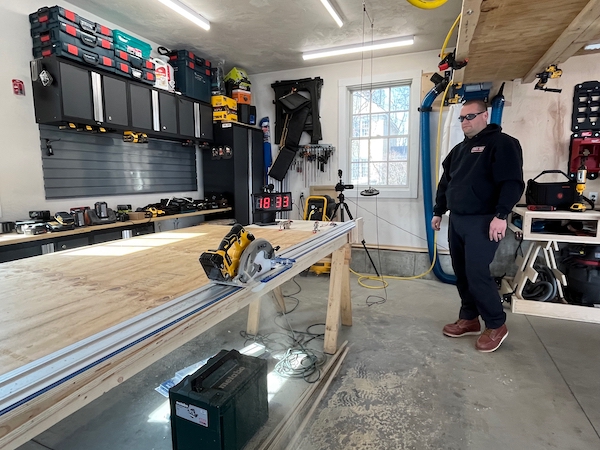
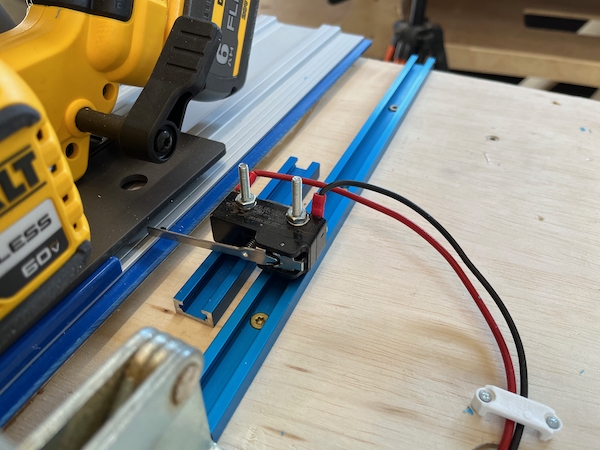
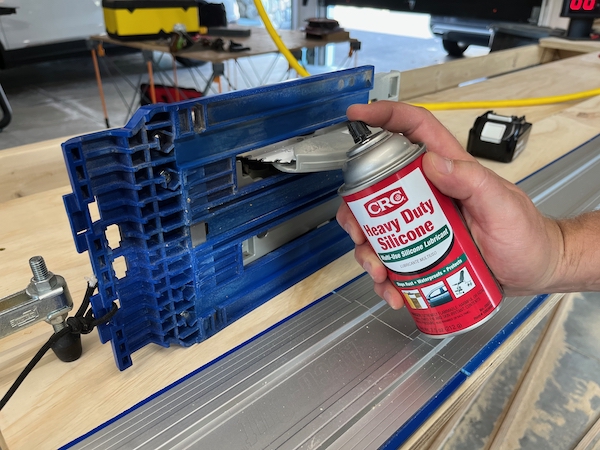
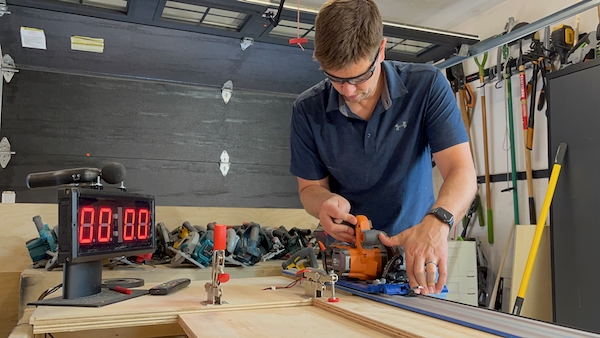
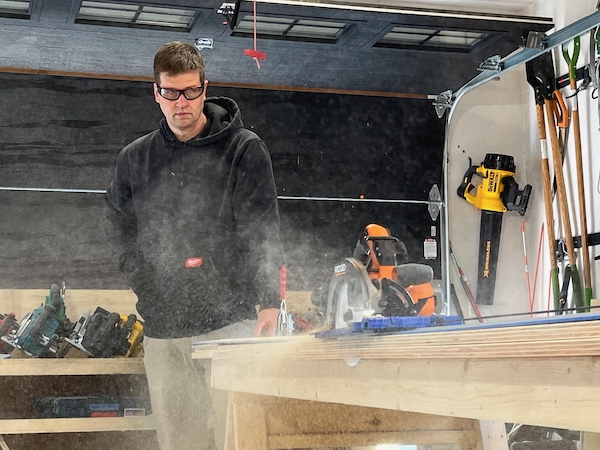
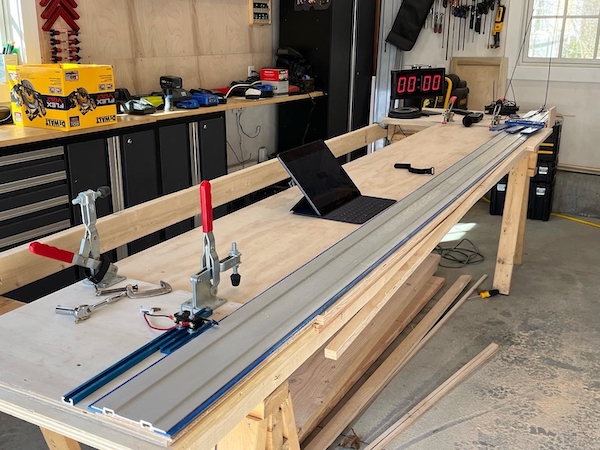
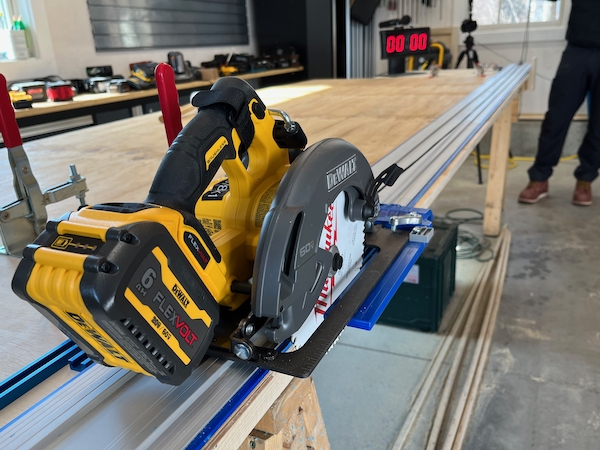
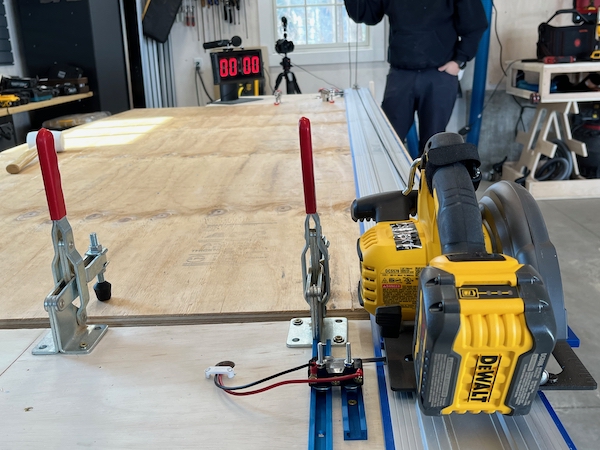
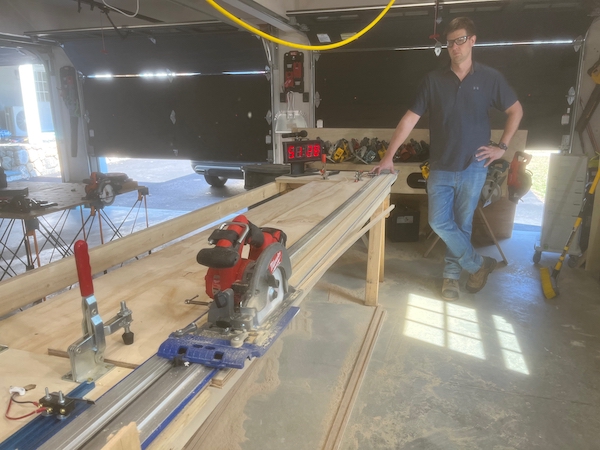
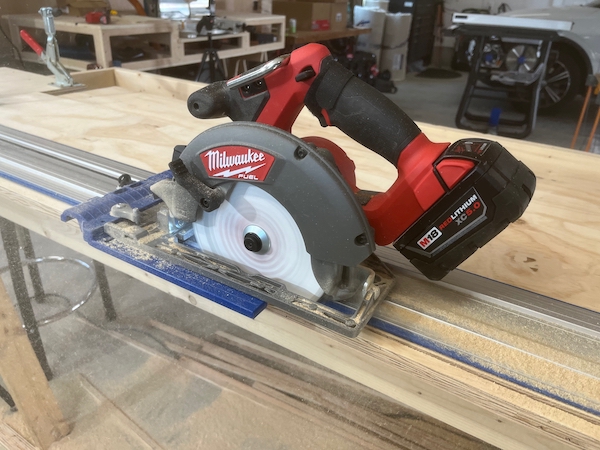
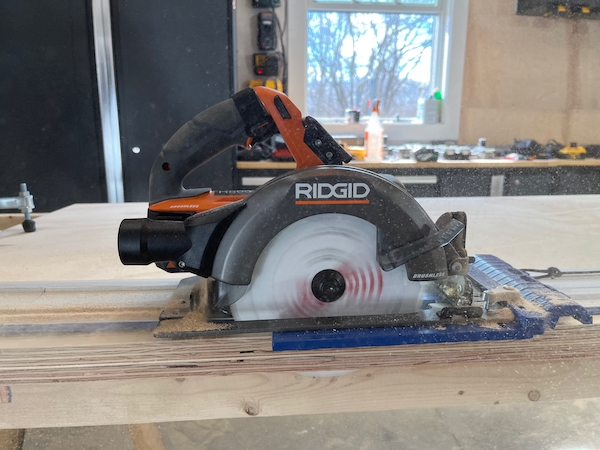
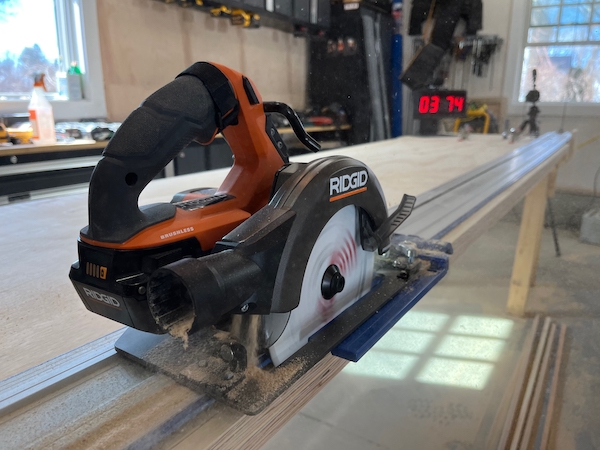

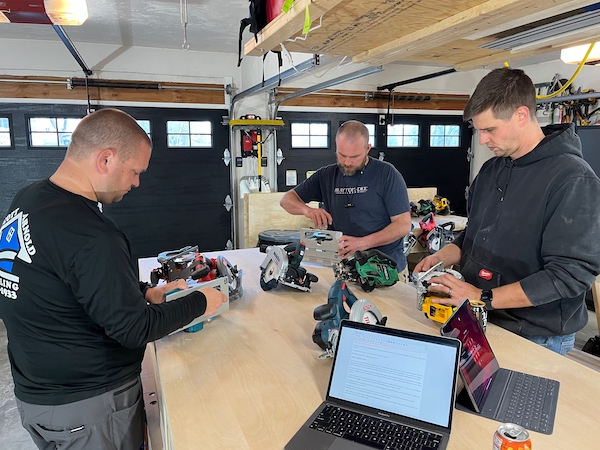
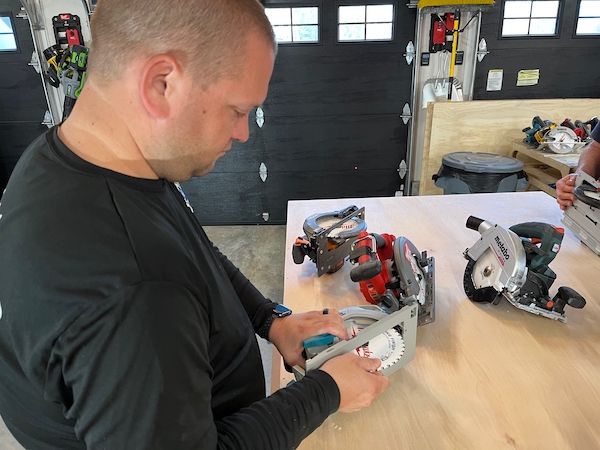
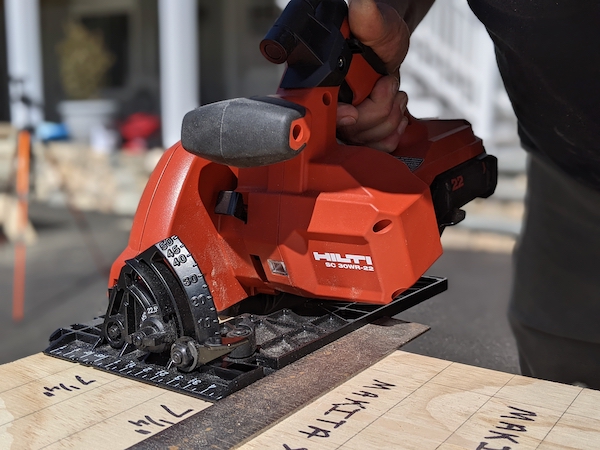
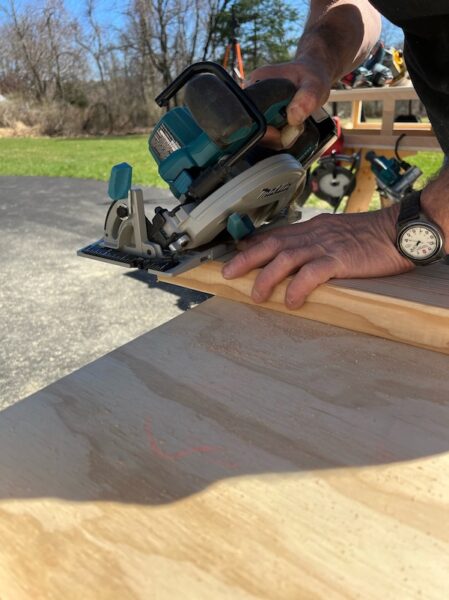
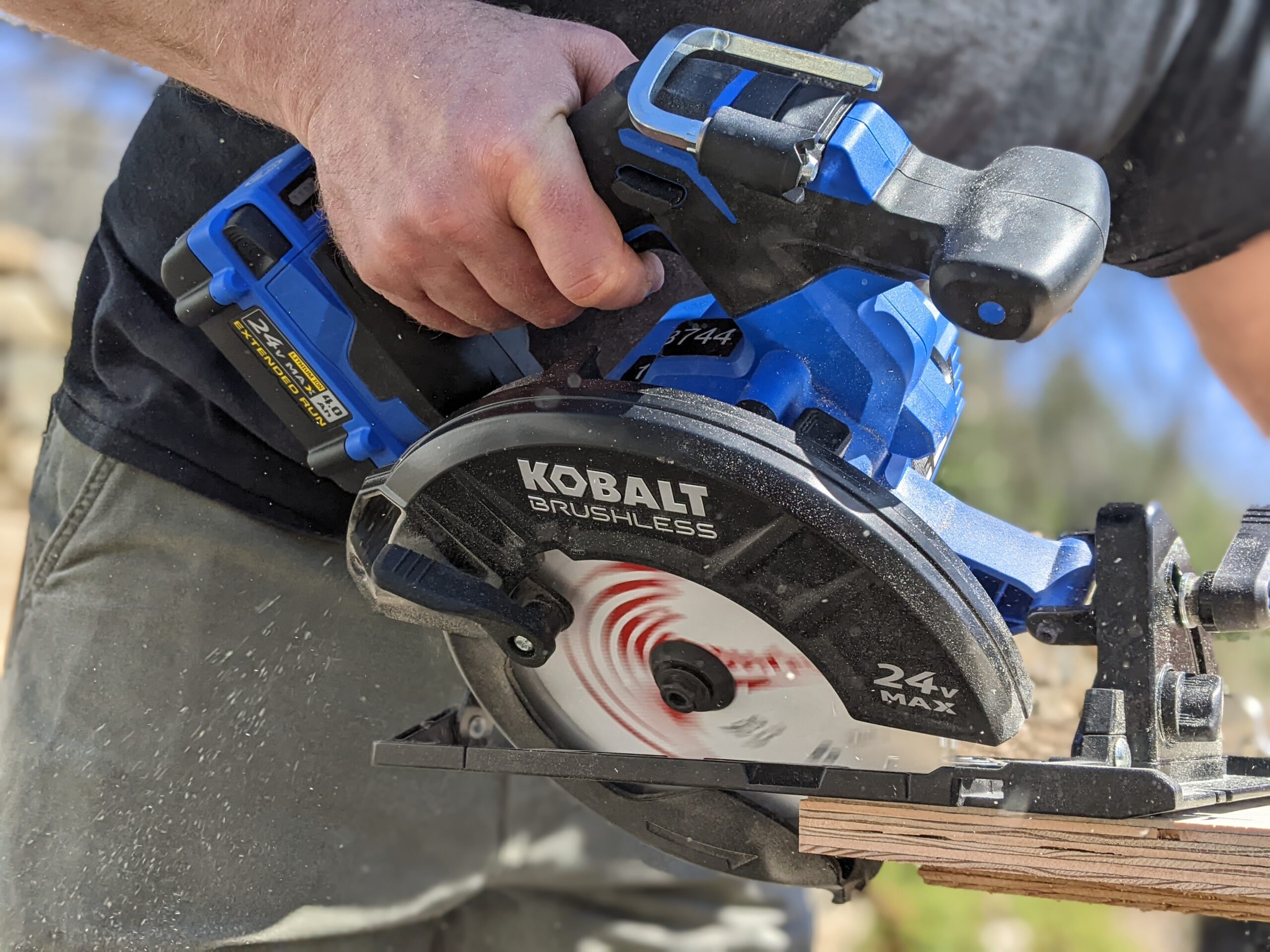
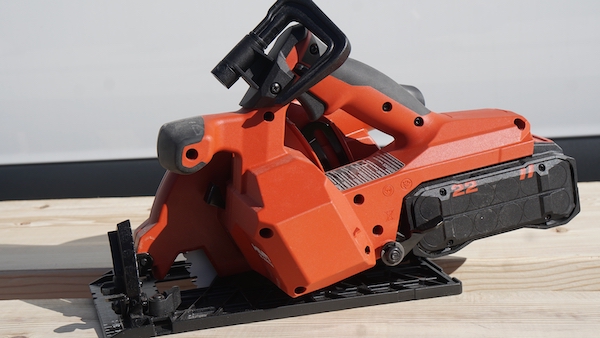
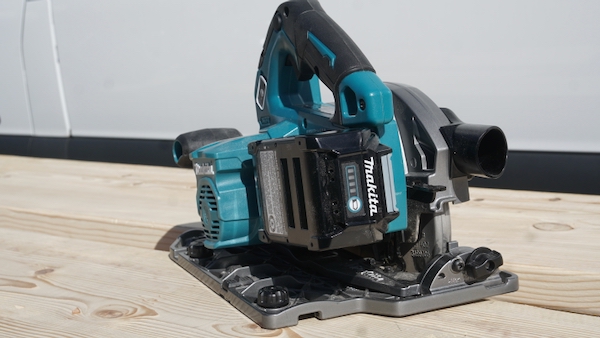
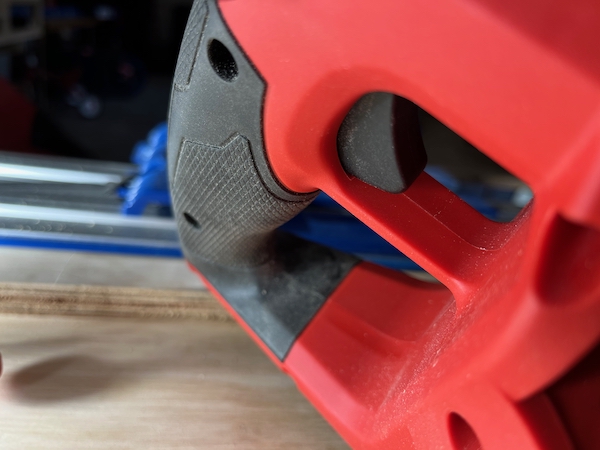
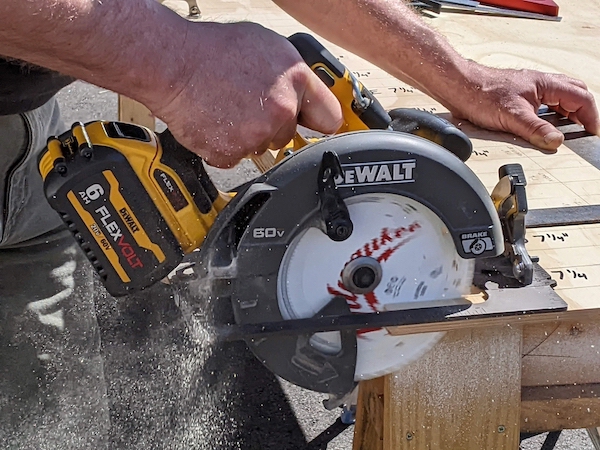
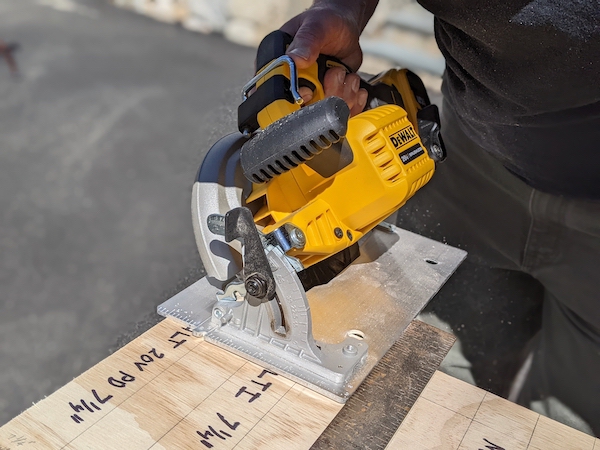
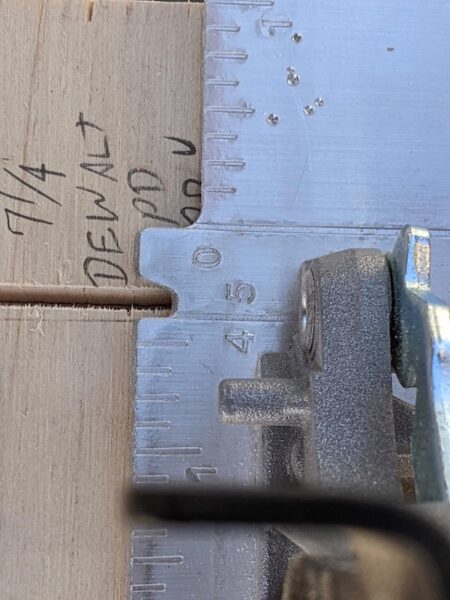
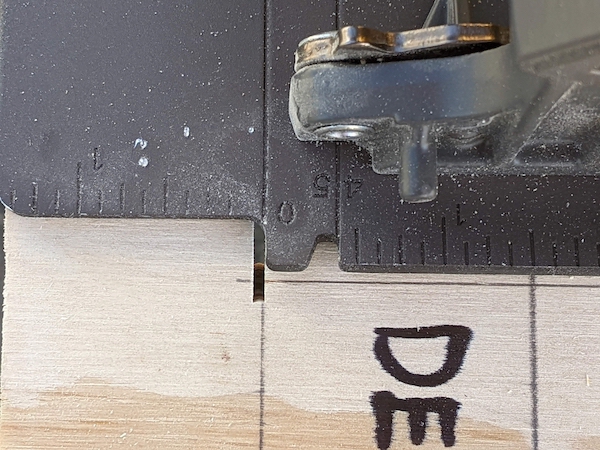
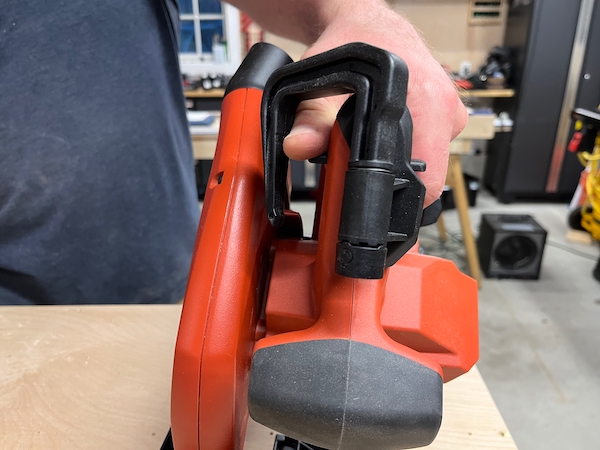
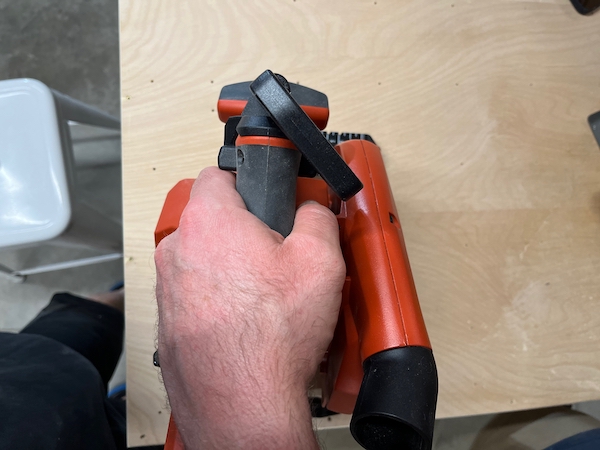
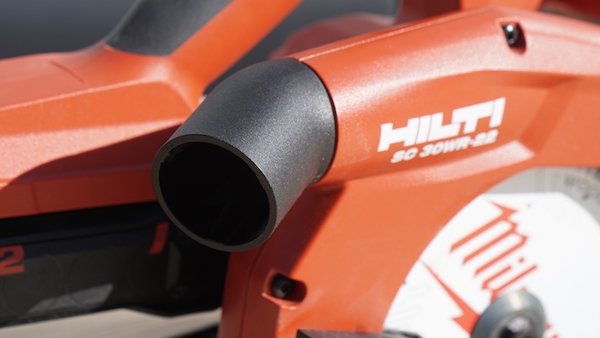
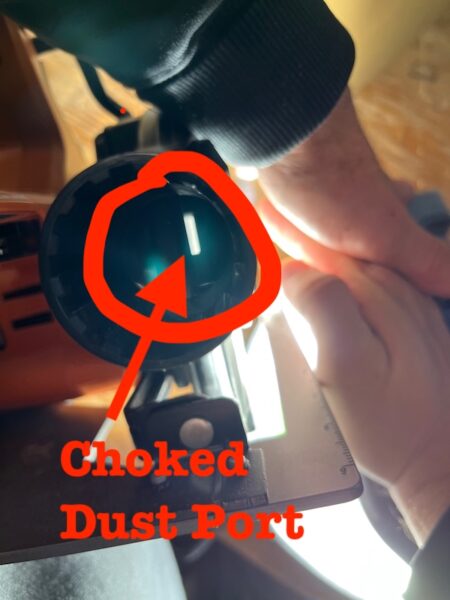
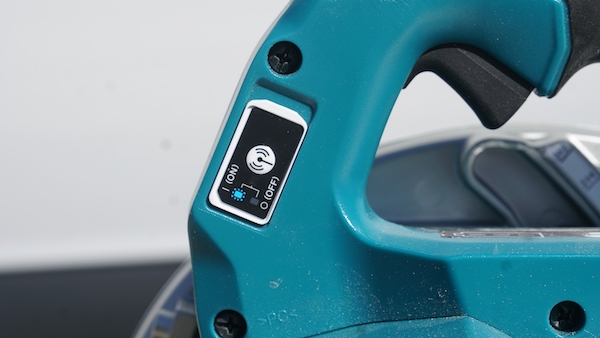
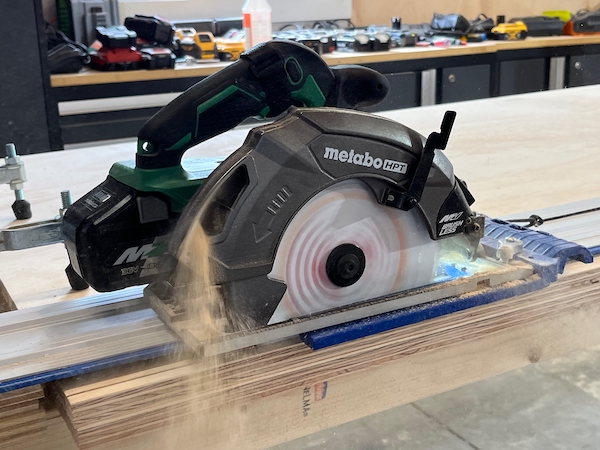
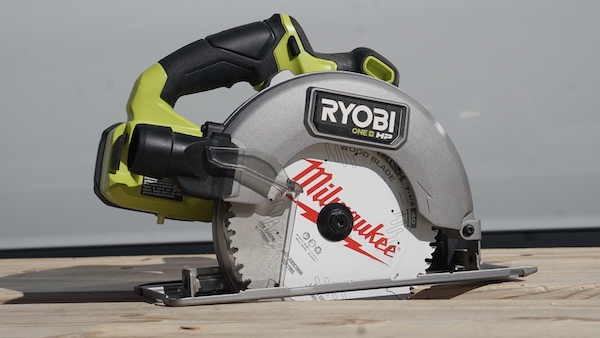
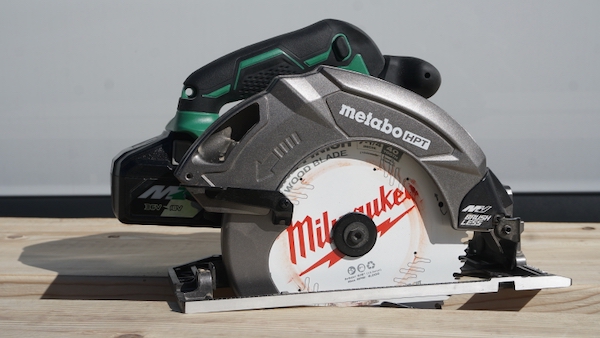
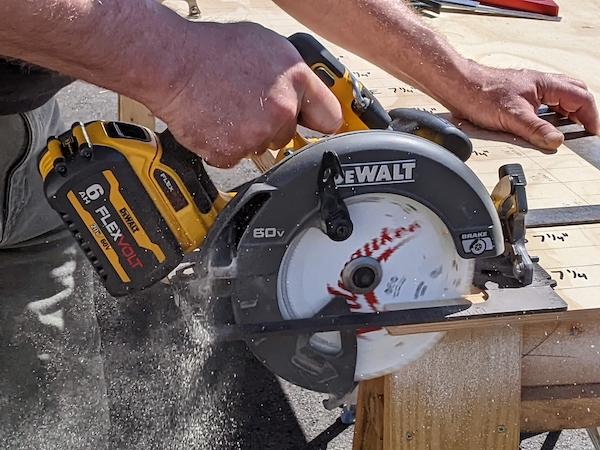
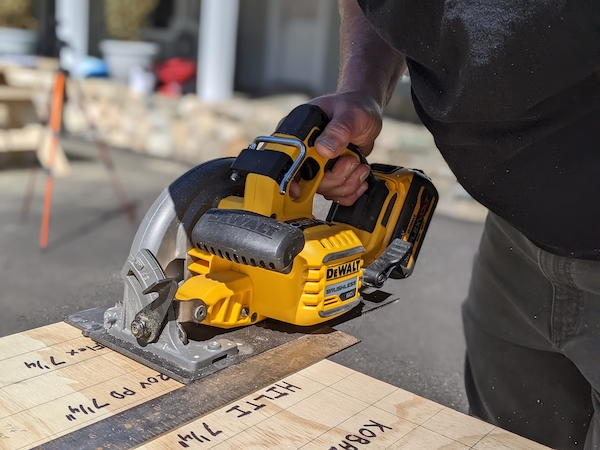
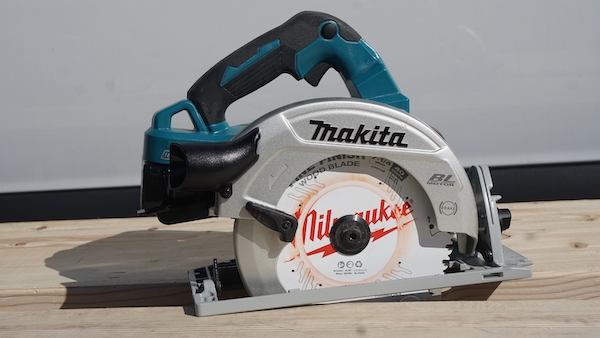
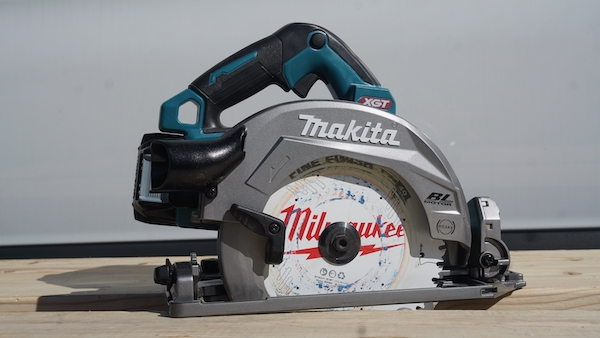
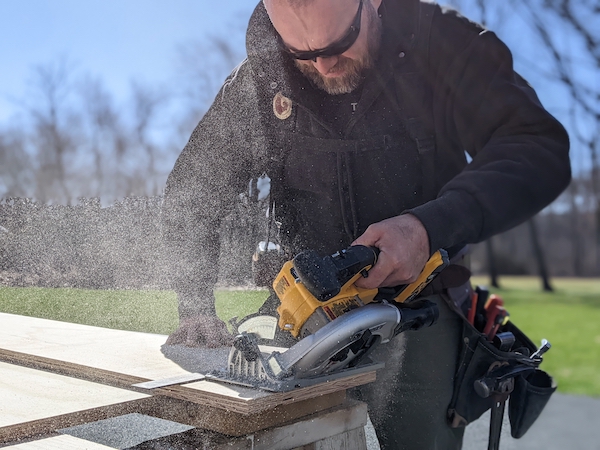
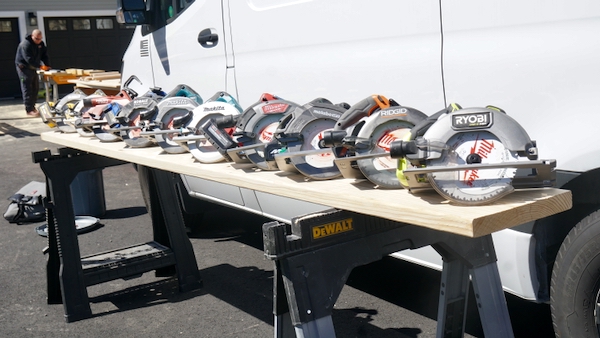
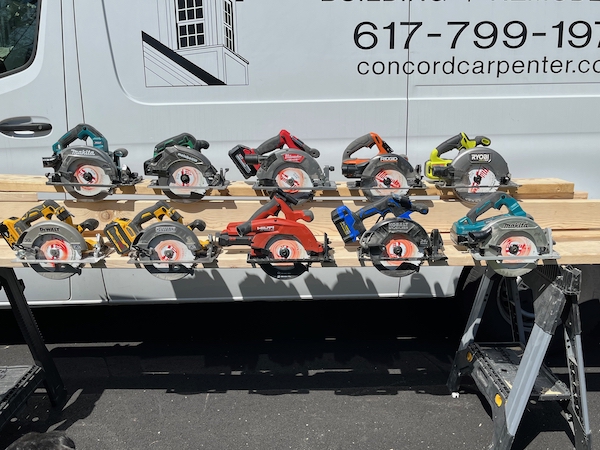












You’ve accidentally used pictures of 6.5″ saws in your article. The Makita at the start of the Best Trigger section and the 4 saws at the start of the Other Standout Features section
Thanks! We have two more Head-to-Heads coming (6-1/2″ and rear handle), we did all the testing the same day. We’ve fixed it now in the article. Thanks for your keen eye!
I guess you can probably go a bit back and forth on this, s not advadvertised with the 5ah. The power detect model should be paired up with a 8ah max battery. Well done test, but some of the tools are not necessarily paired up with the right battery to give the advertised power
This is something we struggle with on these tests. Ideally we compare these saws with similar sized battery packs so we can get a more fair comparison. If you test drive a 4 cylinder car vs an 8 cylinder and you’re talking about performance..it’s REALLY hard to do. Same applies with tools.
Excellent job as always, and my saw came out on top!
Agree
Hey guys, I love your reviews but I was bummed to see Bosch was left out of the review. What’s up with that?
We ask for it, they send what they send. Communications with Bosch lately has been difficult, they have a newer third party agency handling tool requests
Excellent test, very interesting. However I would have liked the comparison to include the new Bosch GKS18V-25 saw
There are still several 6 1/2″ saws in the article with left hung blades.
We tested 6-12/2″ 7-1/4″ and rear-handled saws that day. We will be publishing them in 3 separate articles and videos.
The still photo of all 10 saws shows that they all have the blade on the right hand side of the motor. Some of the single saw photos show saws with the blade on the left hand side of the motor. Please explain.
We tested 6-12/2″ 7-1/4″ and rear-handled saws that day. We will be publishing them in 3 separate articles and videos.
The mythical M18 top handle left hand 7¼” circular saw…THAT ONLY RYOBI BUILDS!!!!!!
Curious if your performance tests can account the saws that have adaptive torque and speed. e.g. the Makitas. A better test would have been a cross cut rather than a fancy, assisted rip.
Nick – Not really sure there is any difference. A rip in plywood is no different than a cross cut, the material cuts the same in either direction. I think the point of our test was to as closely as possible compare performance of each saw with fixed parameters. So if a saw has adaptive speed (not really torque as these tools are only adjusting motor speed, there is not torque adjustment), it theoretically can adjust to best match the speed of the rig pulling the saw.
[…] The more compact cordless one-handed reciprocating category is clearly here to stay as it offers an extremely versatile, compact cutting solution for many trades. The performance is quite impressive for a small compact tool and something everyone should consider for their arsenal of tools. Obviously, if you’re already invested heavily in a battery platform you’ll likely stick with that brand, but now you’ve got the data to help you understand the capabilities of these tools and how they compare to the competition. You can also check our our Best 7-1/4″ Cordless Circular Saw Head-to-Head. […]
[…] you’re looking for a great article on the Best 7-1/4″ Cordless Circular Saw then check out this […]
[…] If you’re interested in learning more about other options then check out our Best 7-1/4″ Cordless Circular Saw Review. […]
[…] If you’re interested in learning about other circular saws then check out our Best 7-1/4″ Cordless Circular Saw Review. […]
[…] If you’re looking for more information on cordless circular saws then check out our Best 7-1/4″ Cordless Circular Saw Review. […]